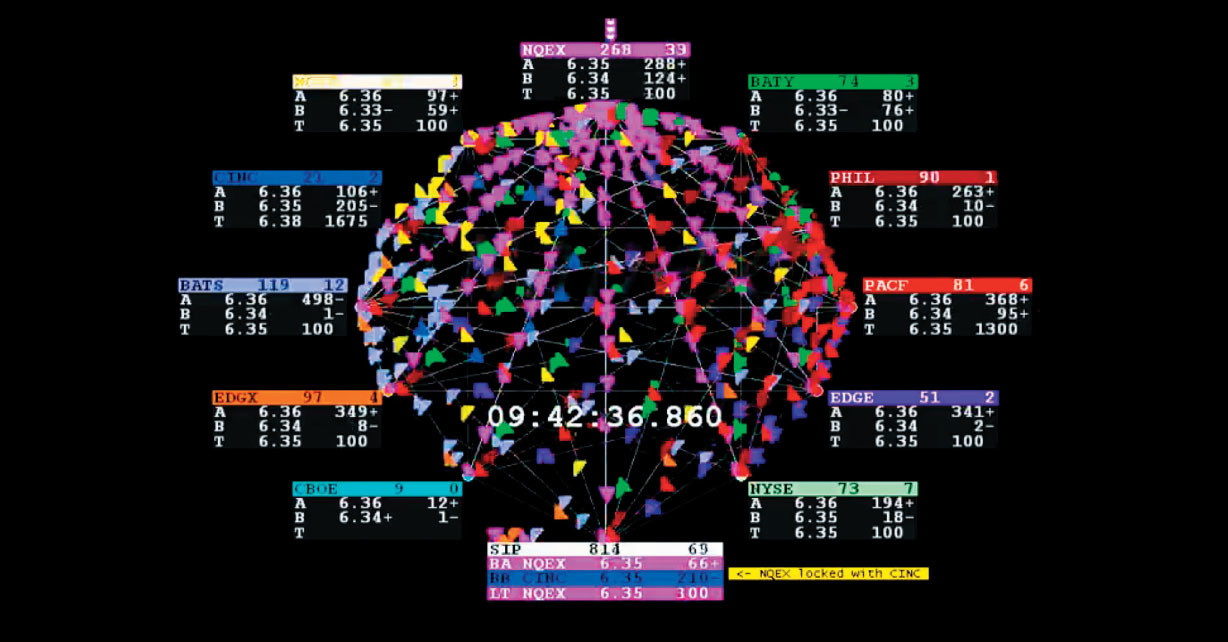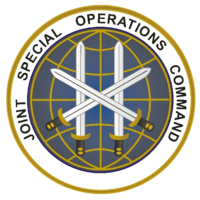This case-study was produced by Alexander J. Singleton, master of science in information systems technology candidate in pursuit at The George Washington University – School of Business. The publication is now accessible in its entirety below via Scribd.
“There are known knowns. These are things we know that we know. There are known unknowns. That is to say, there are things that we know we don’t know. But there are also unknown unknowns. There are things we don’t know we don’t know.”
-Donald Rumsfeld, U.S. Secretary of Defense
Acclaimed New York columnist Thomas Friedman once offered a post-modern view in a time blinded by the emotional fog of war and terror in the horrific aftermath of 9/11- a significant event in world-history taking a right turn into a blind-alley: the dawn of a new chaotic order (Friedman, Thomas L). Suffice it to say, Mr Friedman’s prescience was right on-point: military strategy changed forever since that day. Fighter pilots, in constant pursuit of perfection, hold what they call “rankless-debrief” to discuss what went right or wrong during a mission upon returning to base, “going around the horn,” to fairly criticize or congratulate pilots within the squadron, so they can ultimately improve flight-patterns- just another iterative loop programmed by constant-training to perfect skill: [OODA](Observe, Orient, Decide, Act). After the first few months of September 2001, in former fighter-pilot fashion, Secretary of Defense Donald Rumsfeld astutely observed that the Department of Defense (DoD) was yet another siloed organization next to the Central Intelligence Agency (CIA), National Security Agency (NSA) and the myriad of other intelligence services chartered to defend America but ironically unable to share information across a network that might actually protect America, let alone defend. The age-old adage, “Those who cannot remember the past are condemned to repeat it” never fails to fall on the giant, deaf ears of every mighty empire, from Ancient Rome to Great Britain- but not the United States of America, at least under Secretary Rumsfeld’s watch, as he submit that the military acquisition process was ill-suited “to meet the demands posed by an expansion of unconventional and asymmetrical threats in an era of technological advances,” during his confirmation hearing before the Senate Armed Services Committee (Light, Paul C). Mr. Rumsfeld’s Pentagon leveraged the strength of technological superiority by restructuring vertically-integrated chains-of-command according to flatter, node-centric warfare surgically executing with many small-groups of special operations forces in coordination with unmanned-aerial drone strikes and surveillance. The United States of America has yet to sustain an attack since 9/11 and no longer should She fear rebuke when declaring “Mission Accomplished.” This paper is not about the art of war but it is about the art of business- a nuanced examination of the aforementioned success and failure-factors within the context of the New World Economy, now defined by start-ups asymmetrically structured like special operations forces, stealing market-share away from established corporate empires invariably doomed to fail because of siloed, hierarchical management instead of adapting strategy and tactics to a world lit only by lines of code, one start-up at a time-like one called Brightergy.
Brightergy may very well be one of the most progressive tech companies residing in Kansas City, a modern-model of how to build and run a quintessential start-up unlike some of the “code sweatshops” in the area- large in size of staff and invention but lacking innovation. BrighterLink is Brightergy’s technology product, an all-in-one energy intelligence platform. The BrighterLink team reports directly to Bruce Wang, Brightergy Chief Technology Officer, earning the rank after going to market with several, venture-backed Silicon Valley start-ups. According to President & CEO of Brightergy, Adam Blake, the solar energy installation business is becoming increasingly commoditized with shrinking margins due to a fiercely competitive, fragmented landscape in not just progressive states and municipalities like Boston, New York City, and San Francisco, but all over the United States- including the Rust-Belt, Sun Belt and American Heartland (“Interview of Adam Blake, CEO.”). The value proposition of solar is largely dependent on solar-friendly utility tariffs, state and federal subsidies. Solar-energy systems are similar to other types of home remodeling projects and are not typically accompanied by a recurring revenue stream. Consequently, residential applications were largely ignored across the country due to the lack of scale and a dependence on subsidies for homeowners netting thin margins, leaving many solar-companies to essentially become glorified construction-financing companies, like SolarCity, because the solar infrastructure applications-business generated marginal returns on investments under previous tax-regimes until financial models implicated second and higher-order effects of scalable solar solutions (Griffin, Trent (@trentgriffin)).

What people often miss when they think about implications of something like this is second and higher order effects.
For the near-term, many solar industry entrepreneurs and incumbent utilities are heavily focused on go-to-market strategies for enterprise solutions promising integrated energy services, easily indicating how the enterprise is profiting by energy regulation instead of the status-quo utility relationship. Brightergy is one of the few lone-beacons shining the path to efficient enterprise energy management.
Today, Brightergy markets BrighterLink as the “#1 all-in energy platform; a better way to manage your energy all-in one place,” (“The #1 All-In-One Energy Platform.”, brighterlink.io). Upon review of the website and experiencing the demo, a seasoned software engineer appreciates the functionality afforded by the robust application program interface (API) interlocking with the internet-of-things including smart-thermostats, smart-outlets, energy monitors and sensors– all of which empower the smart-grid with a valuable return on investment by reducing energy consumption, or more simply stated: allowing businesses to save money via data analysis and management with technology, as noted on their website (“BrighterLink.”, “Do USB Outlets Waste Energy Just like Conventional Wall Warts?” Electricity.):
“BrighterLink is one of the first to combine traditional energy broker services with world-class technology, so you get get the best of both worlds, having control over your energy means access to the details in real-time. It means having information you can act on, in addition to reports on what already happened…Effortlessly manage energy data, from utility bills to real-time energy use, all in one place. Use that data to empower your own decisions, while our energy experts use it to quickly market you to top suppliers and ensure you get the best rates.” (“The #1 All-In-One Energy Platform.” )
BrighterLink was originally conceived as one of Brightergy’s skunkworks projects, formed within a siloed, stand-alone business-segment reporting directly to corporate executives as a strategic hedge against the likely possibility that the Solar Investment Tax Credit (ITC) would expire in 2016, and unlikely to be extended; fortunately for Brightergy, the ITC was renewed as of December 2015, assuring many more brighter days ahead for the entire solar industry as well (Lacey, Stephen).
Now, Brightergy, saddled with the BrighterLink technology platform, is obviously transforming into a roaring unicorn, right out the gates- but this was only a recent development upon arrival of Bruce Wang this March 2016, who is now Brightergy Chief Technology Officer and leader of BrighterLink. According to Mr. Wang, BrighterLink was initially siloed as one product, practically forbidden from reaching out to other Brightergy segments in fear of management reprimand- a serial disaster waiting to happen for product management. Bruce’s empathy for the founding-group was apparent, as he described the previous BrighterLink culture fraught with angst, completely decentralized- over half of the beginning team was offshore. Mr. Wang believes remote-work environments are symbiotic at some organizations but in some cases, especially those contained within a silo, incompatible with a retrenchment strategy to become more cross-functional within an organization. Glib executives mistakenly structure business segments within silos, ostensibly controlled, reporting directly from the bottom-up to maintain managerial efficacy- a nice way of saying “avoid loss of control” at the risk of exposing ignorance. However, enlightened executives like Brightergy’s executive team led by CEO Adam Blake, wisely empowered the BrighterLink segments with more autonomy, which has been guaranteed to generate results with employee satisfaction, as notioned by Gen. Stanley McChrystal’s Team of Teams, “Purpose affirms trust, trust affirms purpose, and together they forge individuals into a working team…as interconnectedness and ability to transmit information instantly can empower small groups with unprecedented influence: the garage band, the dorm-room start-up, the viral blogger and the terrorist cell.” Bruce was allowed to restructure the new dev-culture, starting from scratch to become a homegrown tech-favorite with a purpose as the “#1 all-in energy platform; a better way to manage your energy all-in one place.”
“Purpose affirms trust, trust affirms purpose, and together they forge individuals into a working team…as interconnectedness and ability to transmit information instantly can empower small groups with unprecedented influence: the garage band, the dorm-room start-up, the viral blogger and the terrorist cell.”
– Gen. Stanley McChrystal, Team of Teams
Bruce Wang is a Chief Technology Officer in every sense of the title and knows the difference between invention and innovation (Carayannis, Dr. Elias). There are simply too many companies staffed with CTO’s who can barely negotiate the command-line, let alone the desktop- veritable arm-chair generals vs. battlefield-ready brigadier generals. Bruce is a skilled-programer at heart but also a graduate from the distinguished University of Michigan computer science program- sharing the same alma mater with both Google’s Larry Page and Twitter’s Dick Costolo. Bruce performs the same function as all of the software engineers do at BrighterLink- not simply because he can, but because he actually leads by example- impossible to do without a firm foundation of software engineering. Bruce codes alongside his engineers- just like the team-leader operating alongside a special forces group. Mr. Wang coordinates strategy, structure and execution according to his retooled approach to change-management:
- Assess the situation.
- Rebuild the team.
- Let the team work according to their own homegrown culture.
Bruce was happy to work alongside anyone willing to relocate to Kansas City, so the operation stayed mostly at headquarters allowing the new team to rebuild with an organic culture, which is paramount in his words because “Culture is how we interact and accomplish goals together.” Upon unification, he coordinated with the team to assess what resources were at their disposal to continue working with BrighterLink, naturally leading to a code-audit. BrighterLink 1.0 was architected on a MEAN stack (MongoDB/NoSQL | ExpressJS | AngularJS | Node.js). Arriving from an outside market and connected to thought-leaders in the Bay-area, he mentioned Elixir in passing to another fellow engineer, having heard that Elixir/Phoenix is the new Ruby on Rails; a few ears perked-up at Brightergy…
“Culture is how we interact and accomplish goals together.”
-Bruce Wang, CTO of Brightergy
Derived from Erlang as a general-purpose, concurrent, functional programming language, it is procedural- akin to reading a process whereas most programming languages are imperative, for example-Java, often difficult for any programmer to observe state, or changing behavior of an object, which is an instance of a class defined by functions and methods; therefore all objects in Elixir are immutable, so there is technically no destruction. Elixir is a functional language designed for building maintainable and scalable applications, leveraging the Erlang virtual-machine (VM), known for running low-latency, distributed and fault-tolerant systems successfully used in web development in addition to the embedded software domain (“Introduction – Elixir.” Introduction – Elixir. N.p., n.d. Web. 20 June 2016). Coupled with Phoenix, Elixir is a complementary web framework leveraging the Erlang VM ability to handle millions of connections along-side Elixir’s beautiful syntax and productive tooling for building fault-tolerant systems (“Introduction – Elixir.”). In plain-English, the benefits of utilizing Elixir/Phoenix are two-fold: speed and community. Pinterest and Bleacher Report are continuously integrating builds on the Elixir/Phoenix framework, the latter of which reportedly utilizes roughly one-fifth of the machines required but 10x faster output (Interview with Bruce Wang). Moreover, due to the sudden influx of novice programmers enabled by the bootcamp movement, the Ruby on Rails community has effectively become saturated, pushing a contingent of senior Rails engineers to defect over to the Erlang-based Elixir, which requires experience to overcome the protracted learning-curve.
Once culture was established at BrighterLink, dev’s behaved like a unit, acting as a group. Bruce Wang continues to remind his teammates to “Think big; execute small.” How do you eat the elephant? One bite at a time. Their first mission as a team was a translation of the original MEAN stack to a minimum viable production written in Elixir/Phoenix; the team succeeded and delivered on-time within one-month as scheduled (“Not Knowing Something Is Not an Excuse for Not Doing It.”). The team officially graduated Bruce’s bootcamp upon delivery of the MVP, and to this day they continue to act as one team. According to Dr. Carayannis of The George Washington University, project management is governed by the “quintuple-constraint” of cost, scope, time, quality and reliability-all of which are subject to various success and failure factors (Carayannis, Dr. Elias). Adequately staffed with manpower and materials, the original BrighterLink team failed not because of external factors but the following internal failure-factors:
- Manpower: A decentralized team diffused any sense of culture.
- Materials: The MEAN stack was not motivating original team- moreover, due to complexity, node.js has trouble scaling.
- Methods: Most critical- cross-functional immobility stifled development.
In concluding this study of Mr. Wang’s retrenchment of BrighterLink, it is fair to infer that he and his team succeeded on account of the following success factors:
- Clearly Defined Objectives: BrighterLink’s awareness to Brightergy product-owner requirements.
- Resources: Extent of resources available to Bruce Wang and his team.
- Availability of Resources: Possibility of obtaining resources previously deprived to BrighterLink workgroup- namely state-of-art programming languages and web-frameworks.
- Autonomy: Laissez-faire Brightergy management of BrighterLink, allowing the group freedom to fail.
Ending this study on the shoulders of two brilliant strategists, Secretary Donald Rumsfeld and Gen. McChrystal: a group’s success is defined by culture; it is the repeated pattern of behavior that defines success- Peter Drucker’s difference between “doing things right” and “doing the right thing,” efficiently, yet effectively (McChrystal, Stanley A., Tantum Collins, David Silverman, and Chris Fussel). America is winning the War on Terror by adapting to change that is less about tactics or technology, but more about the internal architecture and culture of the [US armed forces]-in other words approach to management- so to will the start-up victors go the spoils… (McChrystal, Stanley A., Tantum Collins, David Silverman, and Chris Fussel).
Interview with Bruce Wang, Brightergy Chief Technology Officer by Alexander J. Singleton





